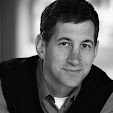 I got a tour of their demonstration lab, which is focused on providing efficiency technology, specifically "Demand Response" (DR) for commercial and residential installation. DR is a concept that is designed to reduce end-user demand for electricity during shortages (hot summer weekday afternoons). That's when electricity is most expensive, and when brown-outs are most likely. By consistently curbing peak consumption during peak hours, the ISO (and utilities like PG&E that offer DR incentives & programs) helps reduce the need to build new generating plants that can cost millions. Consider the fact that, during the summer, power consumption roughly doubles from night-to-day. That's alot of expensive peak generation that's needed only a fraction of the time. And that's why participating in DR programs can generate cool, hard $ for end-users.
I got a tour of their demonstration lab, which is focused on providing efficiency technology, specifically "Demand Response" (DR) for commercial and residential installation. DR is a concept that is designed to reduce end-user demand for electricity during shortages (hot summer weekday afternoons). That's when electricity is most expensive, and when brown-outs are most likely. By consistently curbing peak consumption during peak hours, the ISO (and utilities like PG&E that offer DR incentives & programs) helps reduce the need to build new generating plants that can cost millions. Consider the fact that, during the summer, power consumption roughly doubles from night-to-day. That's alot of expensive peak generation that's needed only a fraction of the time. And that's why participating in DR programs can generate cool, hard $ for end-users. On exhibit in the lab were a number of "smart" residential & commercial technologies including programmable thermostats, appliances and building control systems that curb electrical consumption during DR events. Picture a smart building that dims perimeter lighting and reduces air conditioning when commanded; picture a home thermostat that reduces air conditioning by a few degrees when it receives a signal from its utility; picture a washer/dryer that delay their cycle until electric rates drop. All of these technologies are available today, but many are awaiting legislative approvals for utility programs that incentivize their use.
On exhibit in the lab were a number of "smart" residential & commercial technologies including programmable thermostats, appliances and building control systems that curb electrical consumption during DR events. Picture a smart building that dims perimeter lighting and reduces air conditioning when commanded; picture a home thermostat that reduces air conditioning by a few degrees when it receives a signal from its utility; picture a washer/dryer that delay their cycle until electric rates drop. All of these technologies are available today, but many are awaiting legislative approvals for utility programs that incentivize their use.What are the possibilities there?




No comments:
Post a Comment